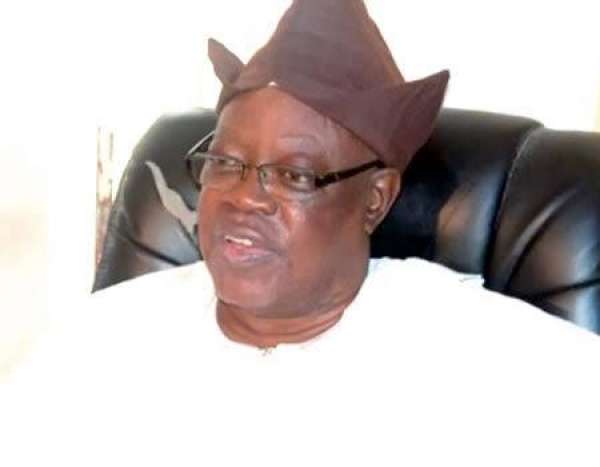The traditional structure of ascension to the throne of Olubadan ohas been well-arranged such that it is seamless. The chieftaincy system makes the royal succession tradition largely free from rancour, litigation and usurpation. Any male child title-holder of the metropolitan centre of Ibadan is a potential king, IgbereTV reports.

In Ibadanland, the two ruling lines are the ‘Egbe Agba’ (civil) and ‘Balogun’ (military) from where Olubadans are appointed on rotational basis to occupy the stool on the demise of a monarch.
The two high chiefs that are next in rank to the Olubadan from the two lines are the Otun Olubadan and Balogun of Ibadanland. The duo are recognised as second-class traditional rulers under the Western Nigeria Law.
The fact that Oba Adetunji was produced by the Balogun Lineage has automatically positioned the Otun Lineage to produce the next Olubadan. And the most senior chief is Senator Lekan Balogun, who was in the Senate for Oyo Central from 1999 to 2003.
Since the news broke that Oba Adetunji has joined his ancestors, it was a sort of mourning of the departed soul at Popoyemoja Compound of the monarch. But at Ali-Iwo Compound of Senator Balogun, it has been jubilation galore that it is time for one of their own to occupy the stool as long as God allows him to live.
In an interview with Daily Sun in May 2017, Balogun said: “When I became Mogaji of Ali Iwo Compound, there were a lot of much older people, whose kids were even older than me. My compound used to produce the oldest person as Mogaji before my time. Yet, these people insisted I should be made Mogaji in the late 1970s. The Olubadan that we have produced so far – Ali Iwo I, reigned for three months as Olubadan. If I make it to the throne of Olubadan, I will be Ali Iwo II. After I became Mogaji, many young and educated men have been made Mogajis, which is the self reforming nature of the Olubadan chieftaincy system.”
Daily Sun, however, enquired from the Ekefa Olubadan, Oloye Lekan Alabi, how long it usually takes for new Olubadan to be installed after the demise of a monarch. He answered by saying Olubadan-in-Council, which is the body of kingmakers, comprising the 11 High Chiefs and Iyalode of Ibadanland, would meet and decide when a new Olubadan would emerge.
He explained that the usual practice has always been that the Olubadan-in-Council would meet and commiserate with the bereaved royal family, and would select the successor that is always known. He added that what the council would do would only be ratification of the next in rank to the late occupier of the throne. The council, he said, would then make recommendation to the state government for approval. After the approval, a date would then be set for installation ceremony.
The Laws of Oyo State of Nigeria 2000 Cap 28 spell out the power of the governor in relation to the appointment of recognised chieftaincies in the state. Irrespective of recommendation from the kingmakers, the laws empower the governor to pick among four most senior chiefs on the line, whose turn it is to produce Olubadan, based on certain parameters, such that the candidate for the throne must not be suffering from any serious physical infirmity, must not be a lunatic and must not be an ex-convict. But no governor in the state has ever changed the ratification made by the Olubadan-in-Council.
In this instance, the four most senior chiefs on the Otun Line are Senator Balogun as the Otun Olubadan; Senator Rashidi Ladoja, former governor of Oyo State, as Osi Olubadan; Eddy Oyewole as Ashipa Olubadan and Abiodun Kola-Daisi, as Ekerin Olubadan. Every chief on the Otun Line has to ascend 22 steps and every chief on the Balogun Line has to climb 23 steps to occupy the stool. It usually takes decades to groom an Olubadan for the stool through the stages of chieftaincy promotion, which is an average of 35 to 40 years.
Jagun is the first step on the two lines that produce Olubadan on rotational basis. But for a chief to become Jagun on either of the two lines, he must have been a ‘Mogaji’ (compound head) . Mogajis are installed by reigning Olubadan, and there are about 500 mogajis at present.




